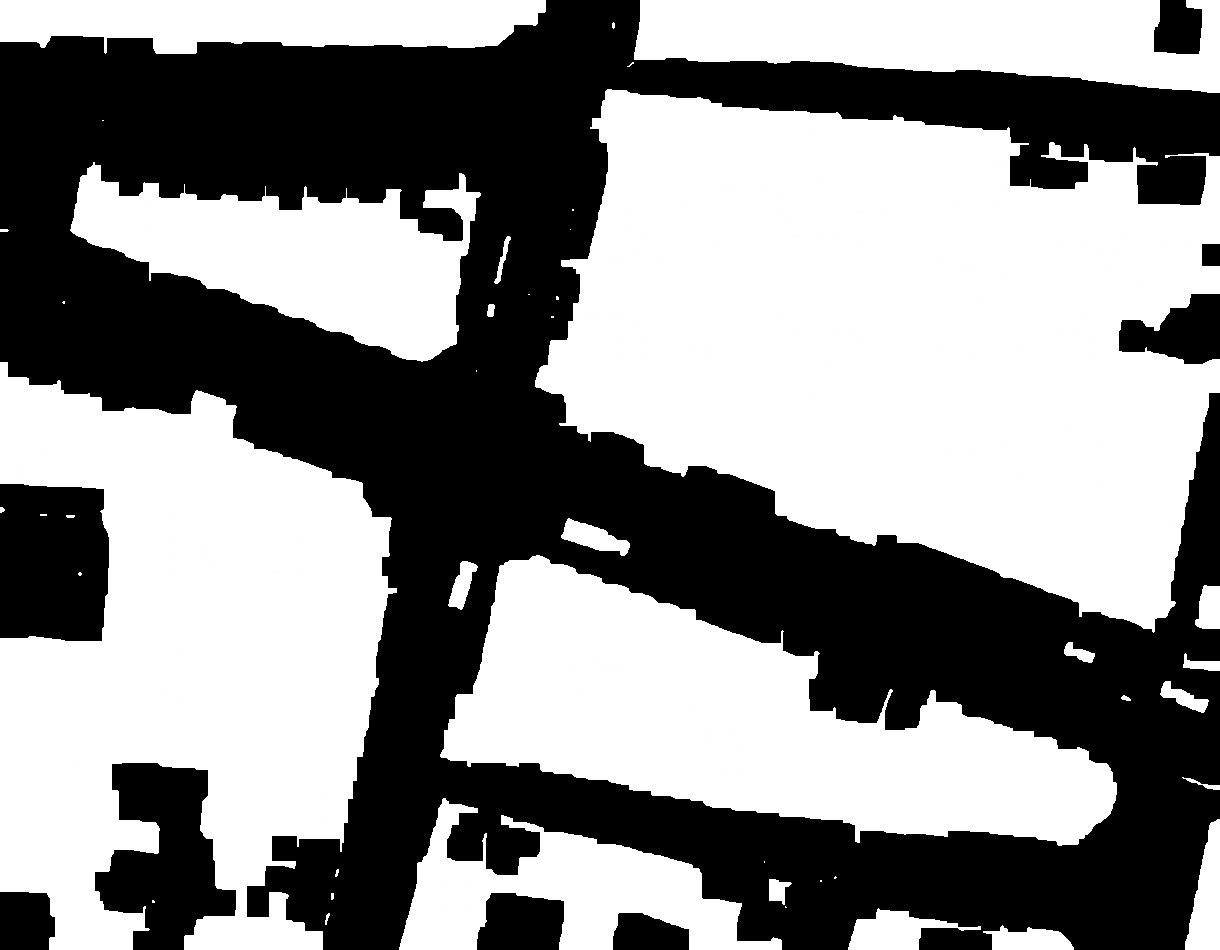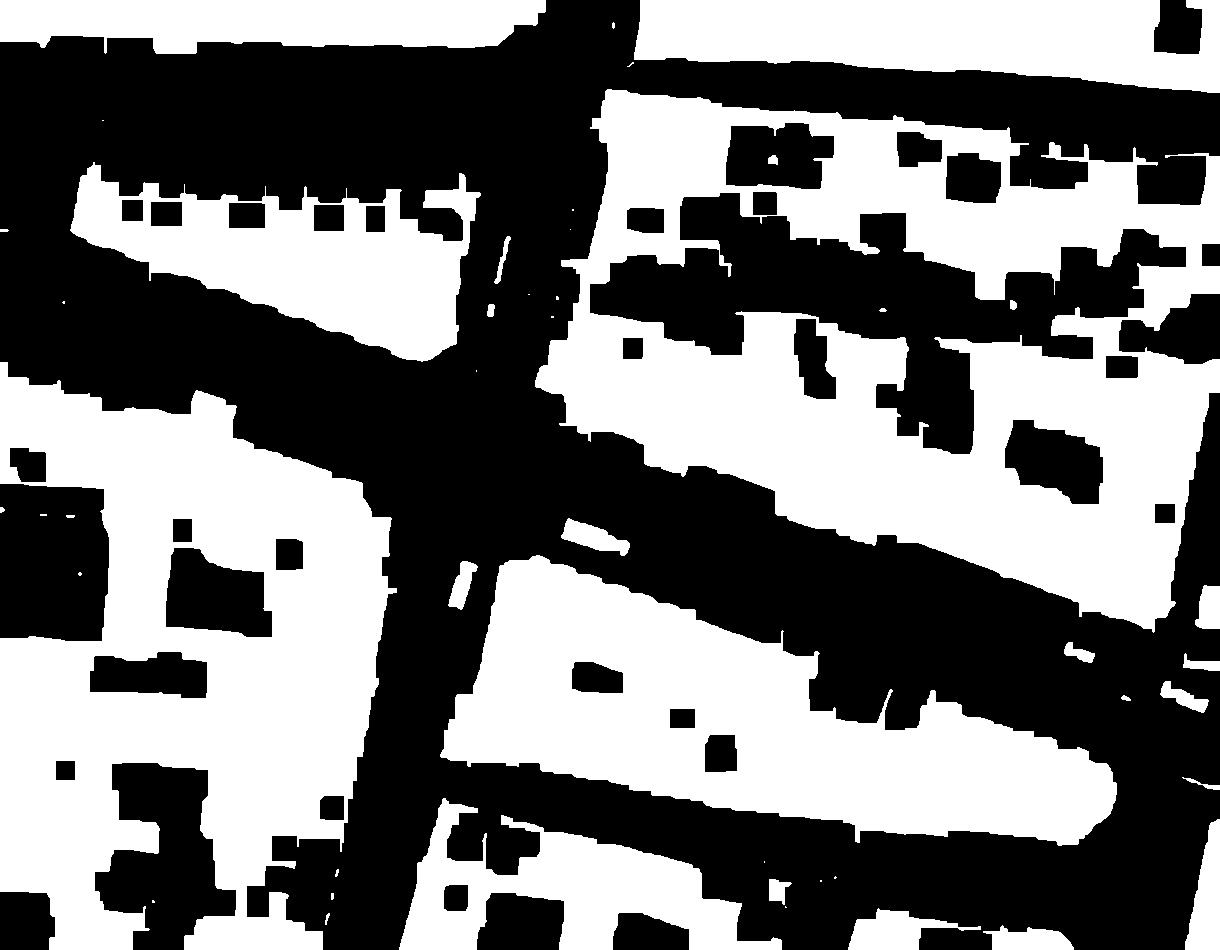I had some extra time at work so I whipped up a quick and dirty implementation of my comment above:
Code:
cv::Mat image = cv::imread("image.jpg", 0);
cv::Mat image_thresh;
cv::threshold(image, image_thresh, 125, 255, cv::THRESH_BINARY);
// Loop through the border pixels and if they're black, floodFill from there
cv::Mat mask;
image_thresh.copyTo(mask);
for (int i = 0; i < mask.cols; i++) {
if (mask.at<char>(0, i) == 0) {
cv::floodFill(mask, cv::Point(i, 0), 255, 0, 10, 10);
}
if (mask.at<char>(mask.rows-1, i) == 0) {
cv::floodFill(mask, cv::Point(i, mask.rows-1), 255, 0, 10, 10);
}
}
for (int i = 0; i < mask.rows; i++) {
if (mask.at<char>(i, 0) == 0) {
cv::floodFill(mask, cv::Point(0, i), 255, 0, 10, 10);
}
if (mask.at<char>(i, mask.cols-1) == 0) {
cv::floodFill(mask, cv::Point(mask.cols-1, i), 255, 0, 10, 10);
}
}
// Compare mask with original.
cv::Mat newImage;
image.copyTo(newImage);
for (int row = 0; row < mask.rows; ++row) {
for (int col = 0; col < mask.cols; ++col) {
if (mask.at<char>(row, col) == 0) {
newImage.at<char>(row, col) = 255;
}
}
}
cv::imshow("filled image", mask);
cv::imshow("Final image", newImage);
cv::imwrite("final.jpg", newImage);
cv::waitKey(0);
return 0;
And the result:





If erosion and dilation aren't what you're looking for, then my approach would be to apply a flood fill to areas connected to the borders to create a mask of just the closed off black boxes. Then apply that mask to the original image to mask out the black boxes.